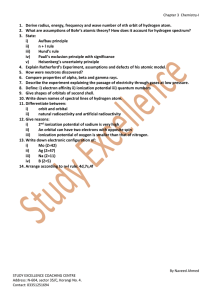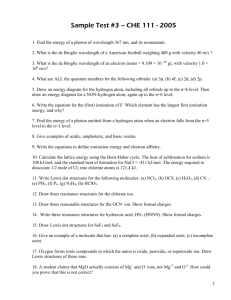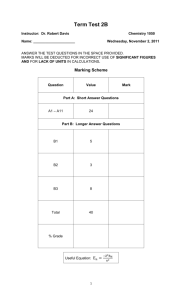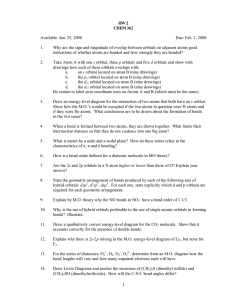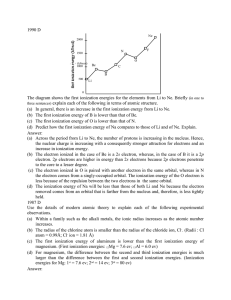Available: Jan. 16, 2008 Due: Jan. 25, 2008 1.
advertisement
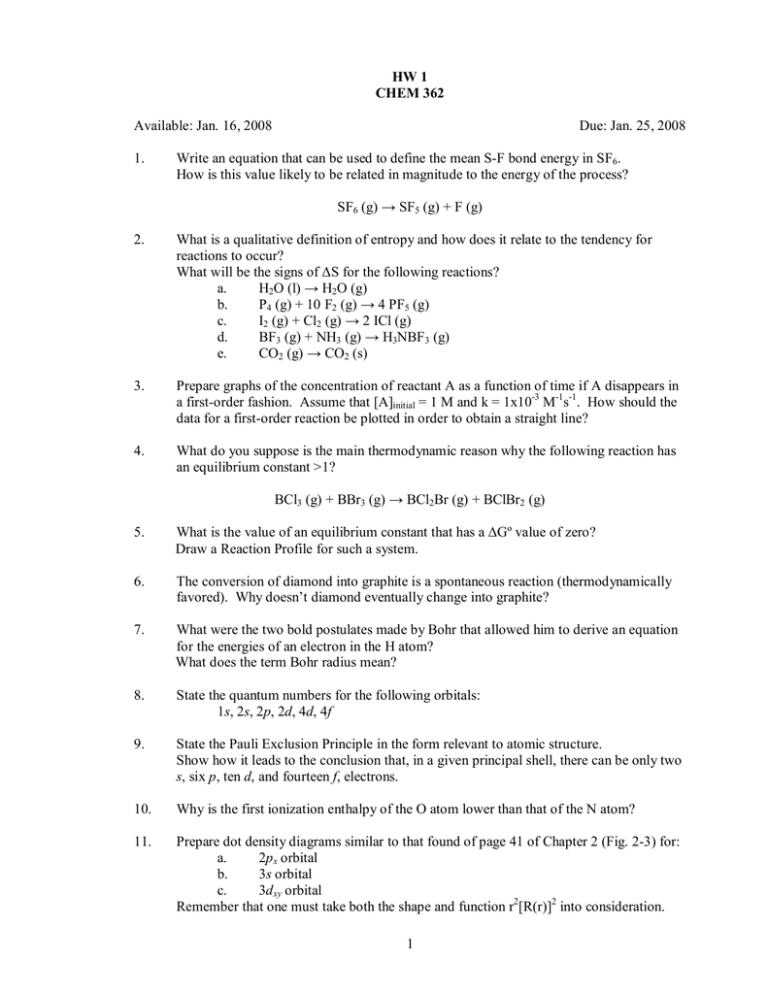
HW 1 CHEM 362 Available: Jan. 16, 2008 1. Due: Jan. 25, 2008 Write an equation that can be used to define the mean S-F bond energy in SF6. How is this value likely to be related in magnitude to the energy of the process? SF6 (g) → SF5 (g) + F (g) 2. What is a qualitative definition of entropy and how does it relate to the tendency for reactions to occur? What will be the signs of ΔS for the following reactions? a. H2O (l) → H2O (g) b. P4 (g) + 10 F2 (g) → 4 PF5 (g) c. I2 (g) + Cl2 (g) → 2 ICl (g) d. BF3 (g) + NH3 (g) → H3NBF3 (g) e. CO2 (g) → CO2 (s) 3. Prepare graphs of the concentration of reactant A as a function of time if A disappears in a first-order fashion. Assume that [A]initial = 1 M and k = 1x10-3 M-1s-1. How should the data for a first-order reaction be plotted in order to obtain a straight line? 4. What do you suppose is the main thermodynamic reason why the following reaction has an equilibrium constant >1? BCl3 (g) + BBr3 (g) → BCl2Br (g) + BClBr2 (g) 5. What is the value of an equilibrium constant that has a ΔGº value of zero? Draw a Reaction Profile for such a system. 6. The conversion of diamond into graphite is a spontaneous reaction (thermodynamically favored). Why doesn’t diamond eventually change into graphite? 7. What were the two bold postulates made by Bohr that allowed him to derive an equation for the energies of an electron in the H atom? What does the term Bohr radius mean? 8. State the quantum numbers for the following orbitals: 1s, 2s, 2p, 2d, 4d, 4f 9. State the Pauli Exclusion Principle in the form relevant to atomic structure. Show how it leads to the conclusion that, in a given principal shell, there can be only two s, six p, ten d, and fourteen f, electrons. 10. Why is the first ionization enthalpy of the O atom lower than that of the N atom? 11. Prepare dot density diagrams similar to that found of page 41 of Chapter 2 (Fig. 2-3) for: a. 2p x orbital b. 3s orbital c. 3d xy orbital Remember that one must take both the shape and function r2[R(r)]2 into consideration. 1 12. Arrange the following in order of increasing second ionization energy (i.e. put the lowest ionization energy first). 19K 56Ba 49In 52Te 13. In what way(s) do 3d and 4d orbitals differ? 14. Which member of the following pairs has the lower electron affinity? 8O 15. or 7N or 55Cs 33As or 32Ge 19K + or 11Na Based on their ground state electronic configurations, list what you would expect as common oxidation states for: 81Tl 16. 37Rb 82Pb 34Se 58Ce 92U What are the different types of radii that must be considered when discussing the elements? Tell how they are defined and how the values are determined. 2
